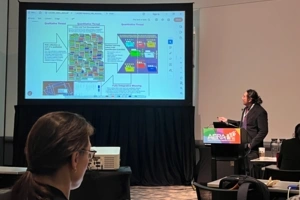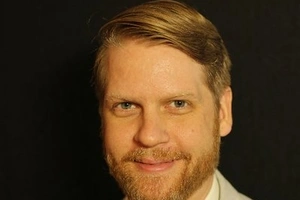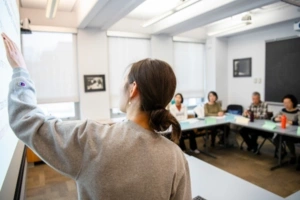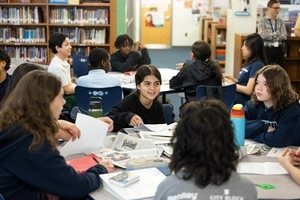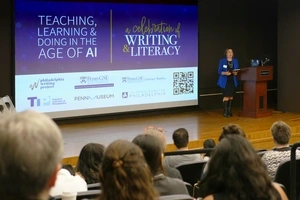Faculty Expert
-
Jonathan Zimmerman
Judy and Howard Berkowitz Professor in Education
Policy, Organizations, Leadership, and Systems Division
The upcoming presidential election is exposing deep divisions in schools and communities and may prompt tough classroom discussions. Educators play a key role in fostering constructive dialogue and creating respectful, safe spaces — but that’s easier said than done. This edition of the Educator’s Playbook kicks off a series aimed at fulfilling one of Penn GSE’s priorities — taking an educative approach to dialogue across differences.
Teachers and school leaders need tools to get kids talking and nurture safe spaces. One resource is Penn GSE’s Dialogue Across Difference certificate program, which helps educators tackle civil discourse in public schools and learn strategies for leading students in productive conversations.
According to Jonathan Zimmerman, an educational historian and leading expert on culture wars at Penn GSE, these critical skills require practice and skill building. He says educators and students need tools and language to bridge divides, analyze issues, and respectfully communicate.
He addressed conflicts in public schools in his 2002 book Whose America? Culture Wars in the Public Schools. Zimmerman published an updated edition in 2022, exploring how political and cultural divisions have disrupted them.
He shares these five tips for educators and school leaders:
Encourage honesty and discomfort
Before students can start talking about issues, educators’ first task is to create an environment where they’re comfortable and unintimidated. Set the tone by leveling with students. Tell them it won’t be easy to discuss complex and challenging issues, but every voice and opinion matters. Students can speak their minds; disagreement and debate are acceptable, but insults and intimidation will not be tolerated. When students feel they’re in a protected space with clear guardrails, they’re more likely to participate and share.
Partner with sister schools
One of the best ways to expand students’ worldview is by interacting with peers with different lived experiences. Most cities have sister communities in the U.S. and internationally; schools can borrow this concept. Link up with a school or class in a different geographic area or type of community (e.g., rural and urban, small and large, East Coast with Upper Midwest, South and Pacific Northwest). Have students meet virtually weekly or monthly to discuss important political and social topics, such as immigration and climate policy. They’ll learn essential communication skills and benefit from a diversity of voices.
Compare and contrast resources
Ask students to weigh in on their curriculum by analyzing different viewpoints and educational resources. For instance, have students explore how their textbook explains a historical moment compared to the 1619 Project’s version of events. Instruct them to select their preferred source and explain their reasoning. Students will disagree, but that invites discussion and debate.
Disclose your bias
Teachers may feel comfortable revealing their positions and biases when appropriate. If educators disclose their stance, they model constructive dialog and participate in a classroom democracy. A word of caution: educators should be clear that students can disagree with them without fear of punishment or retribution.
Explore differing opinions
Many students (and adults) have “confirmation bias,” preferring information sources that share their worldviews and opinions. Challenging that position is a healthy exercise. Encourage your students to move beyond their usual news feed and explore other news sources. For instance, students and their parents can watch or read liberal-leaning news outlets if a family identifies as conservative. In contrast, families that consider themselves liberal can consume news with a conservative viewpoint. Have students document their experiences: What surprised them? What did they learn? What could they fact-check? Have them bring those observations to a classroom discussion.

Jonathan Zimmerman is the Judy and Howard Berkowitz Professor in Education at Penn GSE. He has written nine books, including Free Speech: And Why You Should Give a Damn and a revised 20th-anniversary edition of his 2002 book Whose America? Culture Wars in the Public Schools.
Subscribe to the Educator's Playbook
Get the latest release of the Educator's Playbook delivered straight to your inbox.
Media Inquiries
Penn GSE Communications is here to help reporters connect with the education experts they need.



